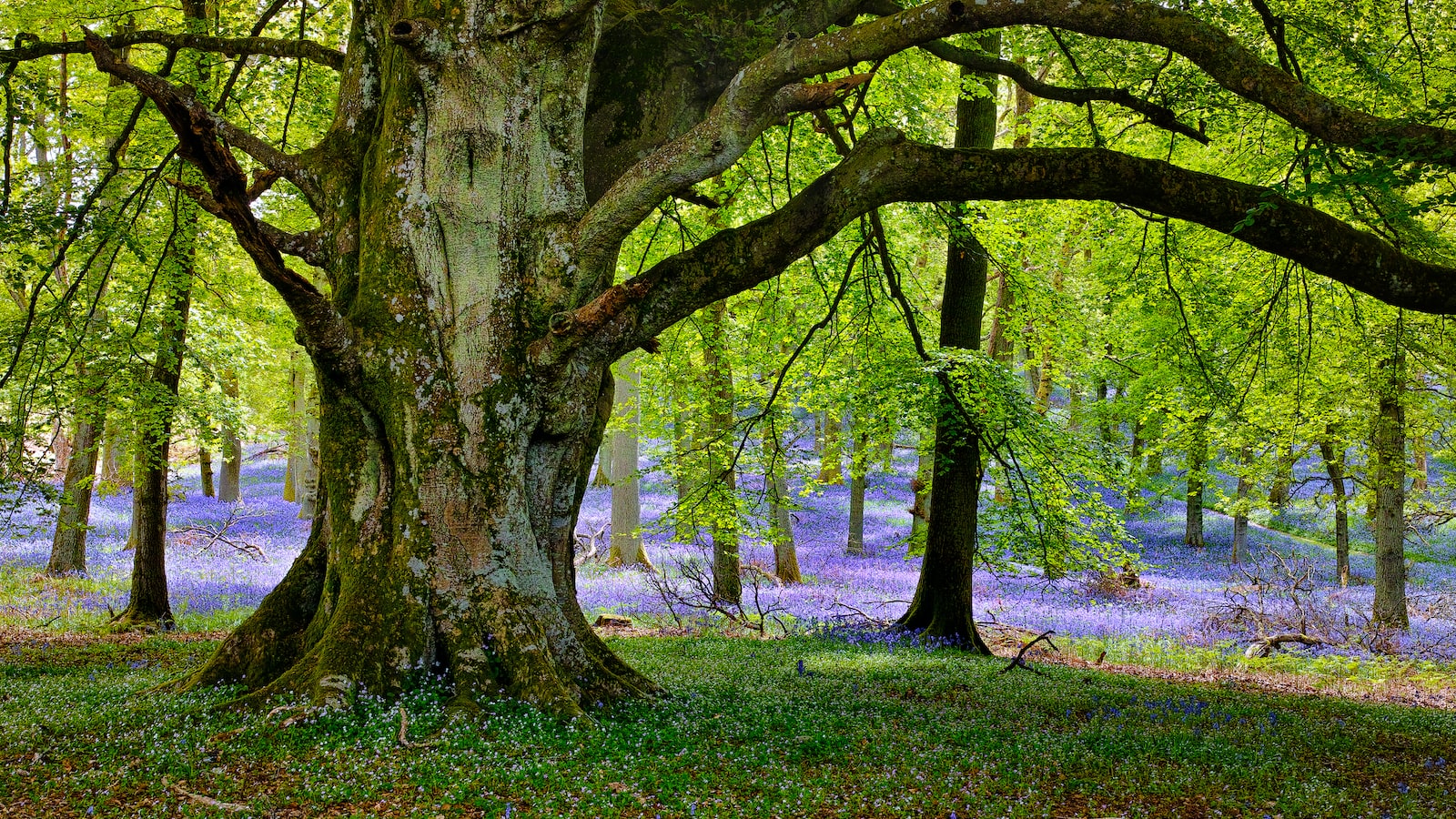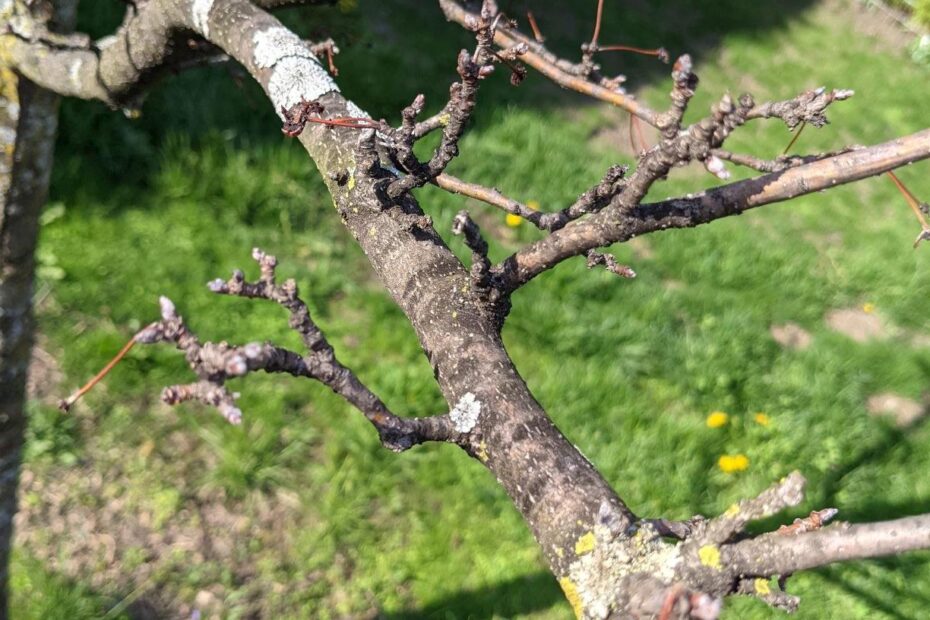In the whimsical realm of gardens, where nature’s secrets unfurl with each passing season, a solitary figure stands mournfully amidst a vibrant tapestry. Its once majestic branches, now bereft of life, cast long shadows under a desolate sun. As the gentle breeze rustles through its skeletal remains, a question echoes through the air, whispered by the gardener’s weary heart: “Is my beloved crabapple tree truly dead?” In this enigmatic tale of botanical life and death, we embark on a quest to uncover the signs, dissect the truth, and seek solace amidst the ephemeral nature of the natural world. Join us as we tread between hope and despair, peering deep into the core of the matter, searching for the ultimate fate that has befallen the mighty crabapple tree.
1. Assessing the Vitality of Your Crabapple Tree: Signs to Determine if It’s Dead or Dormant
Are you concerned about the state of your beloved crabapple tree? Wondering if it has met its untimely demise or is merely taking a rejuvenating slumber? Fear not, for we are here to guide you through the signs that will help you determine whether your crabapple tree is dead or just dormant.
First and foremost, observe the branches of your tree. If the branches are brittle and snap easily, it may be a clear indication of death. On the other hand, if the branches are flexible and bend without breaking, there is still hope for your crabapple tree’s survival. Look closely at the buds as well. If they are dry and shriveled, it could be a sign of lifelessness. However, if the buds appear plump and show signs of swelling, your tree is likely in a state of dormancy, preparing for its glorious resurrection in the upcoming season.
| Features/Tips | Dead Tree | Dormant Tree |
|---|---|---|
| Branches | Brittle and easily snap | Flexible and bend without breaking |
| Buds | Dry and shriveled | Plump and show signs of swelling |
| Foliage | No leaves or brown, shriveled leaves | No leaves, but healthy buds and branches |
Another key aspect to examine is the foliage. If your crabapple tree lacks any leaves or if the leaves appear brown and shriveled, it may be an indication of its demise. Nevertheless, if your tree does not have leaves but possesses healthy buds and branches, it is likely just resting and waiting for the perfect time to burst into vibrant foliage once again.
Now armed with these enlightening signs, you can make a more informed assessment of whether your crabapple tree has met its end or is merely taking a refreshing nap. Remember to give it time and care, for even dormant trees have the potential to flourish and breathe life into your garden once more.

2. Understanding Potential Causes of Crabapple Tree Decline: Factors to Consider in Assessing Tree Health
Crabapple trees are known for their stunning blossoms and vibrant foliage, but what should you do if your beloved tree appears to be in decline? Before jumping to conclusions and assuming it’s dead, it’s important to understand the potential causes of crabapple tree decline and assess its overall health.
Factors that may contribute to the decline of a crabapple tree can vary, so evaluating several elements is crucial. Keep in mind the following aspects when determining the well-being of your tree:
- Environmental conditions: Extreme weather conditions, such as frost, drought, or excessive heat, can negatively impact tree health. Assess if your tree has been exposed to any of these factors recently.
- Pest infestation: Insects and diseases can also cause damage to crabapple trees. Inspect the trunk, branches, and leaves for signs of pests or disease, such as holes, discoloration, or unusual spots.
- Soil conditions: Poor soil quality, lacking essential nutrients or being excessively compacted, can affect tree growth. Evaluate the soil around your tree and consider soil testing for a more accurate assessment.
| Features | Tips |
|---|---|
| Leaves: | Check for wilting, discoloration, or abnormal growth patterns. |
| Bark: | Look for cracks, lesions, or unusual texture. |
| Roots: | Inspect the roots for signs of rot or damage. |
Remember, assessing the decline of a crabapple tree requires careful observation and consideration of various factors. While it may be distressing to see your tree struggling, there may still be measures that can be taken to revive it and restore its vitality.

3. Reviving a Crabapple Tree: Proven Strategies to Revitalize a Struggling Tree
Have you noticed your beloved crabapple tree looking a little lackluster lately? While it’s natural for trees to go through periods of stress, it doesn’t necessarily mean that your crabapple tree is dead. There are several strategies you can employ to breathe new life into your struggling tree and bring back its vibrant beauty. Here, we share some proven tactics to revitalize your crabapple tree and turn it into a thriving focal point in your garden once again!
1. Pruning with Purpose
Pruning is crucial when it comes to reviving a crabapple tree. Start by removing any dead, diseased, or damaged branches with clean pruning shears. This will not only improve the overall appearance of the tree but also prevent further spread of disease. Additionally, selective pruning can help improve air circulation and redirect nutrients to areas that need revitalization.
2. Boosting Nutrients
A healthy tree requires proper nourishment. Consider conducting a soil test to determine any nutrient deficiencies and then amend the soil accordingly. You can introduce organic matter, such as well-aged compost or composted manure, to enhance the soil’s fertility. Furthermore, fertilizing your crabapple tree with a balanced slow-release fertilizer can provide the essential nutrients it craves, promoting new growth and improved vitality.
| Features | Tips |
|---|---|
| Regular Watering | Ensure that your crabapple tree receives adequate watering during dry spells, especially in its first year after the revival process. |
| Mulching | Apply a layer of organic mulch around the base of the tree to retain moisture, suppress weeds, and provide insulation from extreme temperatures. |
| Pest and Disease Management | Regularly inspect your tree for signs of pests or diseases, and promptly take appropriate measures to prevent and treat any issues that arise. |
By implementing these strategies and providing the necessary care, your crabapple tree has a great chance of bouncing back to its former glory. Remember, it’s important to be patient and consistent in your efforts, as tree revival can be a gradual process. With your dedication and these proven techniques, you’ll soon witness the revitalization of your once-struggling crabapple tree, transforming it into a remarkable centerpiece in your garden once again!

4. Seeking Professional Assistance: When to Consult an Arborist for Expert Diagnosis and Treatment
When it comes to the health of your beloved crabapple tree, it can be concerning to see signs of distress or wonder if it may be on the brink of death. While you may try your best to care for it, sometimes it may be necessary to seek professional assistance for a proper diagnosis and treatment. In such cases, consulting an arborist, who is a specialist in tree care and maintenance, can prove to be invaluable.
An arborist possesses the expertise and knowledge required to assess the overall health of your crabapple tree, identify potential issues, and provide appropriate solutions. They have an acute understanding of various tree diseases, pests, and environmental factors that can impact the well-being of your tree, ultimately helping you make informed decisions. If you’re unsure whether or not your crabapple tree is dead or experiencing a severe decline, it’s advisable to consult an arborist.
| Features | Tips |
|---|---|
| 1. Professional Evaluation | 1. Do research and seek recommendations to find a reputable arborist in your area. |
| 2. Disease Detection | 2. Keep an eye out for signs of common crabapple tree diseases, such as leaf spots, cankers, and powdery mildew. |
| 3. Treatment Options | 3. Ask the arborist about potential treatment options, including pruning, fertilization, and disease management strategies. |
Frequently Asked Questions
Q: Is my crabapple tree putting on a stealthy act, pretending to be dead?
A: As mysterious as it may seem, crabapple trees are not known for their Oscar-worthy performances. If your tree appears lifeless, it might be worth investigating further to determine its true condition.
Q: Could my crabapple tree be taking an extended botanical siesta?
A: While some trees enjoy a well-deserved winter nap, crabapple trees tend to have a regular sleep schedule. If your tree seems to be slumbering beyond its anticipated hibernation period, it’s time to ascertain whether it’s genuinely dormant or if something else is at play.
Q: Will my crabapple tree bounce back from the afterlife, like a leafy phoenix?
A: While we all love a good comeback story, trees transforming into mythical creatures might just stay in the realm of legends. However, with proper care and attention, your crabapple tree might surprise you by returning to its former glory. Don’t lose hope; nurturing it back to health is a journey worth embarking upon! As the final petals of uncertainty fall, we reach the end of our journey to uncover the truth behind your magnificent crabapple tree. It is with a tranquil heart and an impartial gaze that we bid adieu to this enigmatic tale.
While we delved into the depths of your worries, our probing words embraced objectivity and sought to banish all preconceived notions. We embarked on a quest to decipher the cryptic signs that whispered of life or demise, carefully navigating through the labyrinth of doubts and anxiety.
With utmost sensitivity, we unraveled the intricate dance of your tree’s mystifying branches, decoding their silent language. We observed the gentle sway of its twigs, the fading hues of its leaves, and the echoes of nature’s embrace. But alas, the answer that eluded us remained shrouded in the secrets of the earth.
Yet, let us not succumb to despair! For this tale is not one of defeat, but of a quest for understanding. In the realm of nature, life ebbs and flows, as enigmatic as the ethereal mist that shrouds the dawn. It is within this cosmic dance that we find solace, for even the mightiest trees must surrender to the passage of time.
In the end, dear reader, whether your crabapple tree stands tall with vibrant blossoms or bows beneath the weight of eternity, embrace the essence of its existence. Cherish the whispers of the wind as it caresses its branches, and seek solace in the memories it has gifted you.
Beneath the celestial canopy, where the serenade of avian troubadours never ceases, let us find peace knowing that our wonderment shall forever persist. May the final chapter of your crabapple tree’s tale be but a prelude to an eternal symphony of nature’s beauty, adorning both the living and the silent with its resplendent melodies.
As we part ways with this arboreal enigma, remember that the mysteries of the natural world are as plentiful as the stars that twinkle above. In the intricate tapestry of life, questions may remain unanswered, but it is in our perpetual curiosity that we find the true essence of existence.
Farewell, dear reader, as you navigate the vast expanse of your own arboreal connections, remember to find solace not in certainties, but in the marvel of the unknown. And as you ponder the fate of your beloved crabapple tree, let your heart dance alongside the infinite rhythm of nature’s grand orchestra.
- When to Put Weed and Feed on Lawn in Michigan - October 16, 2023
- When to Fertilize Potatoes Plants - October 16, 2023
- Can You Plant Clover in the Spring - October 16, 2023
Contents
- 1 1. Assessing the Vitality of Your Crabapple Tree: Signs to Determine if It’s Dead or Dormant
- 2 2. Understanding Potential Causes of Crabapple Tree Decline: Factors to Consider in Assessing Tree Health
- 3 3. Reviving a Crabapple Tree: Proven Strategies to Revitalize a Struggling Tree
- 4 4. Seeking Professional Assistance: When to Consult an Arborist for Expert Diagnosis and Treatment
- 5 Frequently Asked Questions

